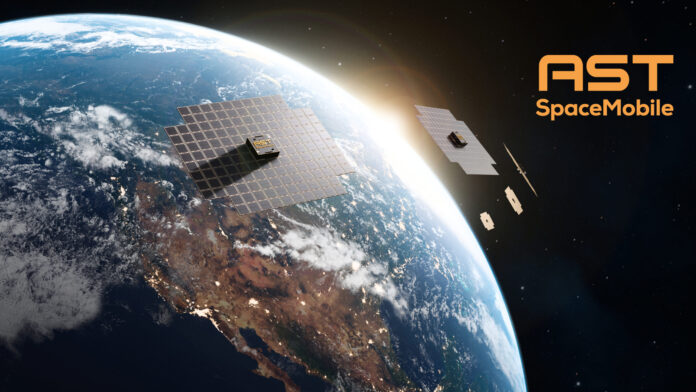AST’s Bluebird satellites are approved for operation in the U.S.
Direct-to-cellular satellite company AST SpaceMobile is getting closer to the launch of the first five Bluebird satellites for its commercial service, with the news that the Federal Communications Commission has granted it an initial license for space-based operations.
AST is now authorized to launch those satellites and operate in the V, S and UHF frequencies for its gateway, feeder links, telemetry, tracking and control operations. The company will use terrestrial cellular spectrum, through deals with individual mobile operators, for the direct communications links with devices. AST has said that between its deals with AT&T and Verizon, it will aim to enable 100% coverage of the United States for their customers.
The regulatory approval from the FCC marks a key step prior to launch of AST’s first five Bluebird satellites, which have been repeatedly delayed due to supplier issues. The company had first planned to launch them before the end of 2023, then expected to launch in the first or second quarter of 2024; the company’s most recent public timeline indicated that the satellites were expected to be transported to the launch site between July and August 2024.
“This regulatory milestone is a significant step to targeting 100% nationwide coverage from space of the continental United States on premium cellular spectrum,” said Scott Wisniewski, president of AST SpaceMobile. “Through our strategic partnerships with companies like AT&T, Verizon, Vodafone and our other key partners around the world, we aim to enhance cellular connectivity globally, essentially eliminating dead zones and empowering remote areas with space-based cellular broadband connectivity.”
“The FCC grant paves the way for commercial space-based broadband services in the United States,” said Vikram Raval, AST’s head of global regulatory affairs. “By approving the launch of our first five BlueBirds, the largest-ever commercial communications arrays to be deployed in low Earth orbit, the FCC has taken a significant step forward for both AST SpaceMobile and U.S. leadership in space. As a U.S. company, we are committed to building our constellation and fostering regulatory relationships domestically and across the globe to provide this vital space-based infrastructure to the United States and across the world.”
Verizon made a $100 million commitment to AST SpaceMobile, which comprises $65 million in commercial prepayments plus $35 million of convertible notes, plus use of the company’s 850 MHz spectrum. In January of this year, AST said that it was primed for commercial service launch with new funding from AT&T, Google, Vodafone and a line of credit. Those investments encompassed $20 million in revenue commitments from AT&T that were predicated on the successful launch and operation of AST SpaceMobile’s first five commercial satellites, and a minimum $25 million in revenue commitments from Vodafone. Both carriers placed purchase orders in undisclosed amounts for AST SpaceMobile network equipment that will support planned commercial services.
AT&T and AST have already been conducting joint testing of various services, including a recent test of streaming video; those tests have encompassed T&T’s 850 MHz spectrum as well as its FirstNet 700 MHz spectrum, and AST also has permission through May of 2025 from AT&T to test using higher-frequency spectrum at 37.6-40 GHz.
AST SpaceMobile said that its BlueWalker 3 satellite currently has the largest-ever commercial communications array in low Earth orbit. It also has satellites in the works with beams designed to support capacity of up to 40 megahertz, which AST SpaceMobile says will could potentially enable data speeds of up to 120 Mbps.
ST SpaceMobile plans to give a quarterly business update on August 14.

